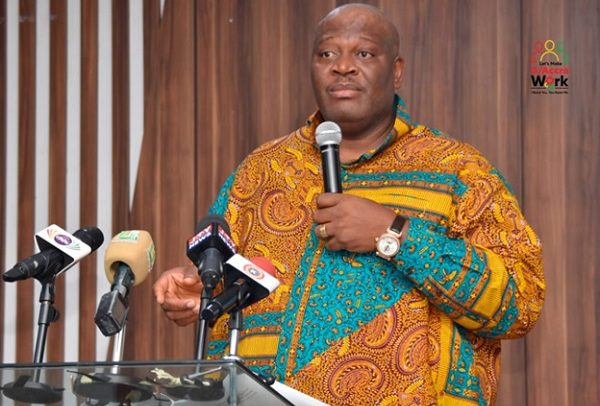Henry Quartey
The Greater Accra Regional Minister, Henry Quartey and some state agencies on Wednesday engaged with residents of Ramsar sites to discuss the roadmap towards the demolition and regularisation of structures owned by the occupants.
The meeting, which was held at the behest of the Greater Accra Regional Coordinating Council headed by the Regional Minister, was to afford the residents an opportunity to understand the progress made so far following the outcome of a technical team engaged to assess the state of encroachment.
Chief Executive Officer of the Lands Commission, John Allotey, in a presentation said the committee had to embark on the exercise to help prevent public outcry in the event of flood in the area as well as maintain the ecological functions of the Ramsar site to achieve its intended purpose for migratory birds following the illegal encroachment of the site by some people.
He, therefore, indicated that for the Ramsar site to remain functional and viable, the committee recommended that areas that were likely to be severely affected during flooding would be re-engineered to facilitate appropriate linkage and water exchange between the lagoon and the sea.
He said since the core zone is highly susceptible to flooding, building structures occurring within the core zone will be demolished.
An assessment by the Regional Security Council indicated that there were 136 structures, comprising 35 buildings, 21 uncompleted buildings, 49 caretaker security rooms and 31 buildings at the foundation stage.
The areas include Klagon, Lashibi Celebrity Hills, Sakumono Village and some areas in Tema Community 11 and 12.
The Greater Accra Regional Minister, who is also the Chairman of the Regional Security Council (REGSEC), cautioned the occupants to desist from further developing any part of the area or encroaching on any part of the land.
He said the exercise, which was earmarked in two phases, would continue with the next phase as the stakeholders especially the Regional Coordinating Council awaits reports from the technical committee in two weeks.
He said lands were not going to be regularised, except structures which were not found in the core zone, after which the lands left would be used by government for other purposes in the interest of the state.
Deputy Minister of Lands and Natural Resources, Benito Owusu Bio, for his part said the entire exercise would last for over six months as a technical committee has been tasked to look at the entire number of structures that has to be regularised, the owners of the structures, and how they acquired the land, after which regularisation begins.
By Ebenezer K. Amponsah


